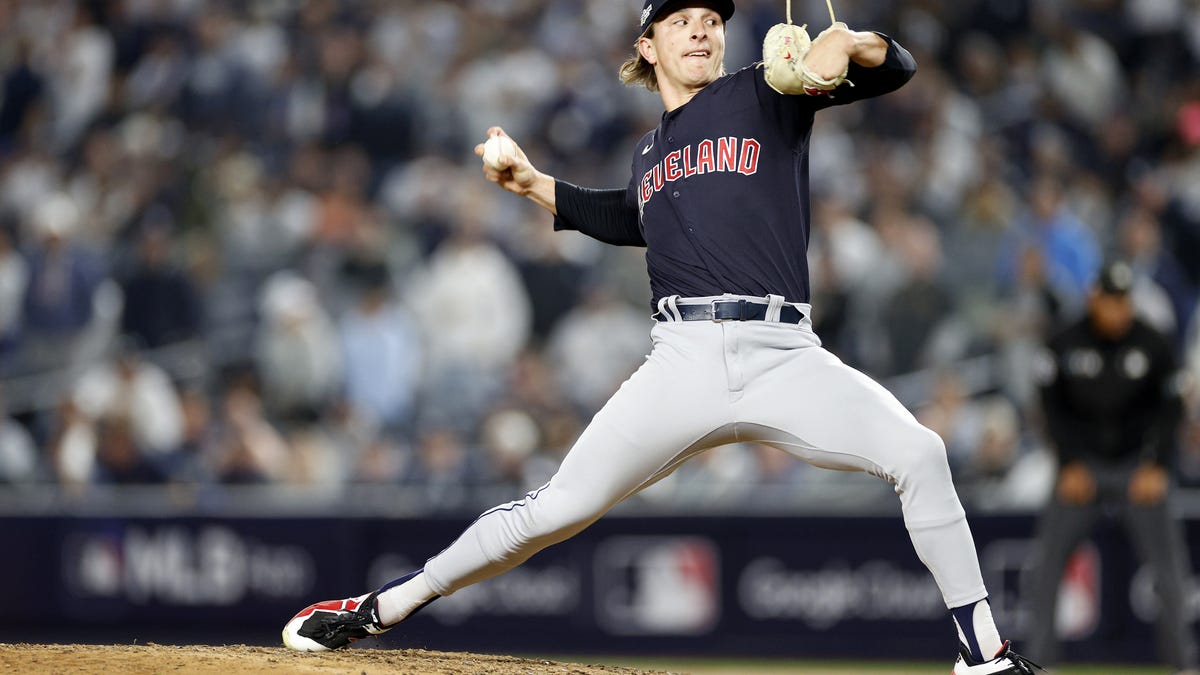Sticky substances are back in fashion for the postseason, it seems

In a little over a year since MLB enabled umpires to routinely check pitchers for illegal foreign substances, there have been a few ejections, pitchers making scenes by stripping to their undergarments, and above all else, there’s been a drastic drop in some pitchers’ spin rates.
In 2021, numerous pitchers appeared to be severely affected by the crackdown on sticky substances, including Oakland’s James Kaprielian, whose fastball dropped by approximately 325 rotations per minute. Yankees ace Gerrit Cole’s heater dropped by 175 rotations per minute. Corbin Burnes, 179 rpm. Tyler Mahle, 230 rpm. Zac Gallen, 178 rpm. So on and so forth. All in all, the average fastball spin rate across all of MLB dropped by 86 rpm. Given that in 2019, the average MLB fastball had about 2,300 rpm, a drop of 86 rpm is equivalent to about a 3.74 percent drop. Keep that in mind as you read the following tweet.
Padres pitcher Joe Musgrove was accused of using some sort of illegal substance and keeping it on his ears. Musgrove was checked out by umpires, who couldn’t find anything.
G/O Media may get a commission
That said, it’s not exactly normal for a pitcher to gain more than 100 rpm on every one of his pitches overnight. There is some suspicion that Musgrove wiped the substance off his ear as the umpires were coming to check him. There is video evidence that Musgrove used his jersey to wipe his right ear at that moment. Musgrove’s velocity was also up on every one of his pitches by at least half a mile per hour, which could explain some of the rise in spin rate, but it’s a weak defense.
Musgrove might be innocent in all this. Obviously, there’s no definitive proof that he was using illegal substances, but that doesn’t mean everyone else is innocent.
Cleveland Guardians pitcher James Karinchak was seemingly proven as a sticky substance user in 2021, when his fastball spin rate dropped by 205 rpm following the June 3 ban. 2021 was Karinchak’s worst year in the big leagues by a landslide, and it got monumentally worse after the ban. Across all of his appearances for Cleveland following the ban, Karinchak recorded a 4.99 ERA, 5.45 FIP, and 1.79 strikeout-to-walk ratio, leading to him being sent back to the minors in both 2021, and to start 2022.
Karinchak made his way back to the big league club, but not before growing out his hair. See, Karinchak had always had short hair as a ball player, but in 2022, he grew it out long. That’s where people believe the sticky substance is coming back into play.
In Game 1 of the ALDS, Karinchak was seen continually going into his hair during his lone inning. He was touching his hair so often that it was as if it were actually a majestic lion’s mane. In the video, you can even see some goop on Karinchak’s neck. It’s pretty obvious that something fishy was going on. Now, you might be thinking “Maybe that’s a scar in Karinchak’s hair.” It’s not. This isn’t the first time an opponent has asked an umpire to check Karinchak’s hair.
Early in September, Twins’ manager Rocco Baldelli called for Karinchak’s hair to be checked.
You can see in the video that the mark that was so prevalent on Karinchak’s neck is nowhere to be found. If that isn’t what Karinchak was reaching for on Tuesday night, I have no idea what it could be.
Some people have come to Karinchak’s defense, like popular baseball YouTuber Baseball Doesn’t Exist.
However, that defense is weak considering there’s a “good chance it’s more than just sweat.” Hence, it’s still an illegal substance. I understand that cheating and baseball go hand-in-hand like being able to tie a cherry stem with your tongue and having a body count higher than the average 1st grader can count, but is it really becoming this obvious? Pitchers better start getting more creative, because if fans can find these suspicious substances so easily, it’s only a matter of time before MLB cracks down on the matter even harder.
For all the latest Sports News Click Here

